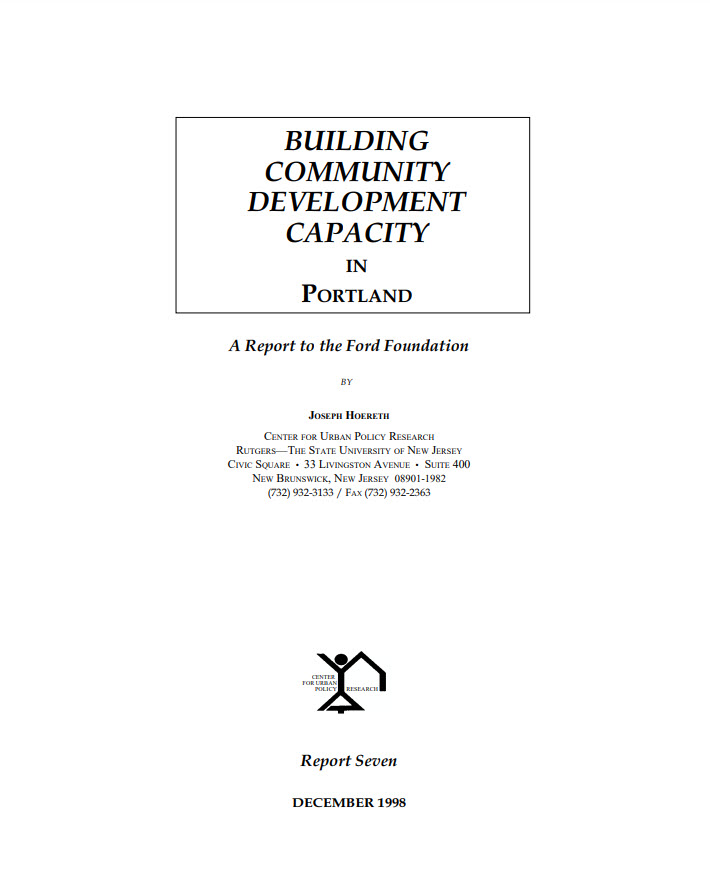Portland does not suffer from many of the socioeconomic problems that plague other cities. The urban core is not physically decayed; urban flight of people and capital has not occurred. The eroding tax bases and the resulting fiscal crises that other large cities know well is just beginning in Portland (Nelson 1995). The
late arrival of big-city problems explains the relative youth of community development initiatives in the city. Neighborhoods served by Portland CDCs have been affected by the economic and demographic growth of the region. Strong regional job growth and relatively affordable real estate prices attract migrants from more costly areas. Population growth has led to a booming real estate market with skyrocketing land prices. Income stagnation and the growth in low-wage jobs have made it more difficult for the average wage earner to afford housing in Portland. A survey by the National Association of Home Builders (NAHB) found Portland the sixth-least-affordable city in the country, less affordable than Los Angeles and Honolulu (Church 1996).The poorest neighborhoods are in the northeast and the outer
southeast parts of the city.
The following trends and issues present challenges for NPF and Portland CDCs:
- Housing is becoming less affordable.
- Public resources are declining, a trend that is likely to continue.
- CDCs want to do more than build housing.
- The booming real estate market is pricing CDCs out of the development business.
- CDCs need more development capital
